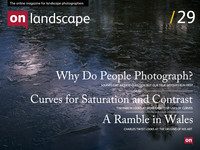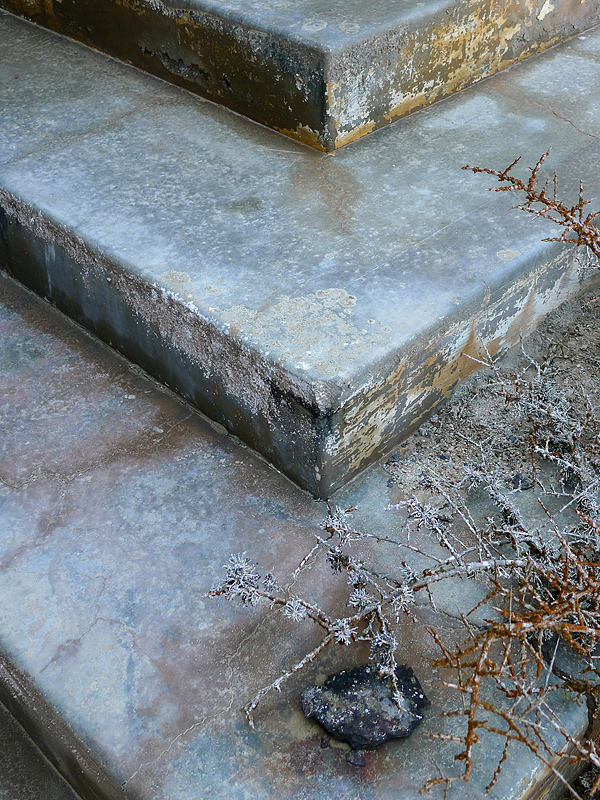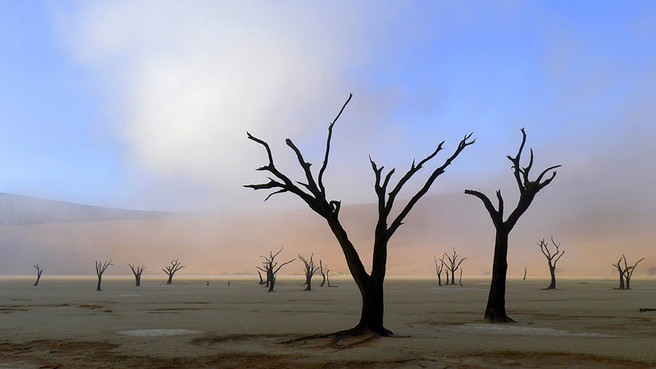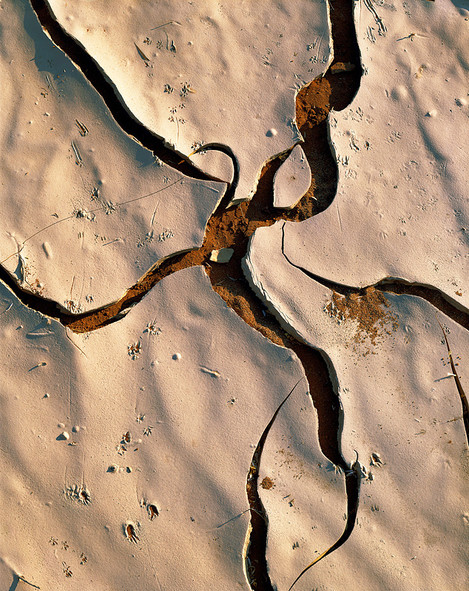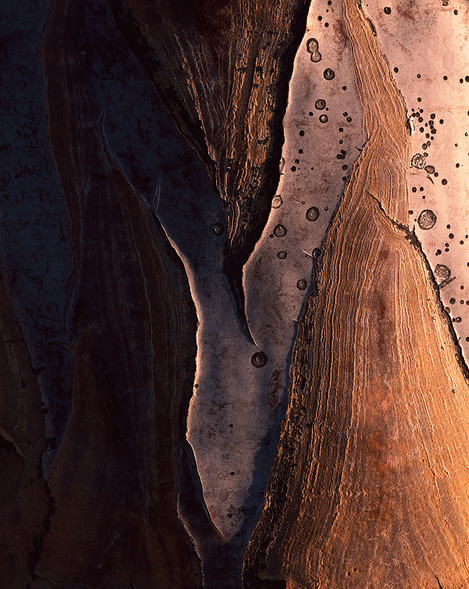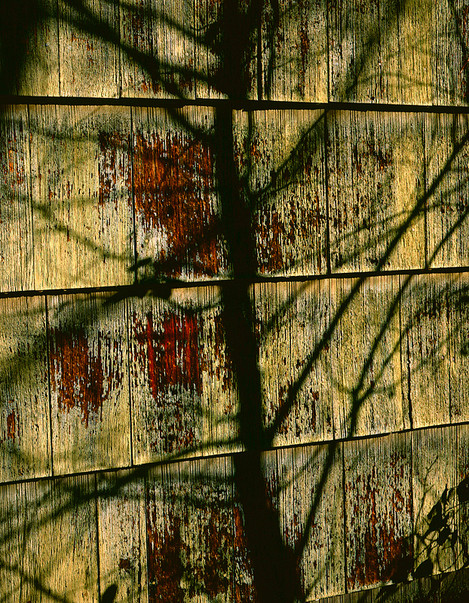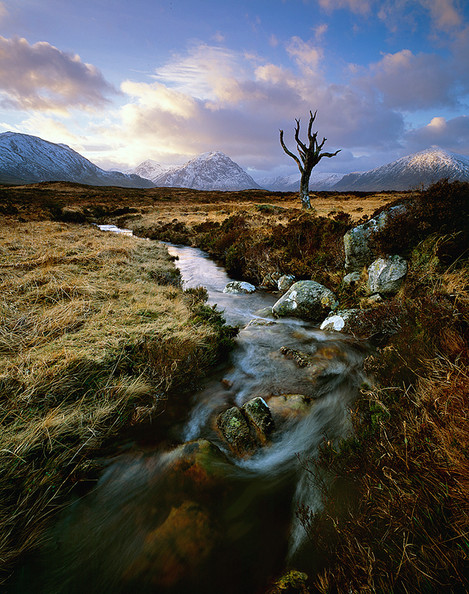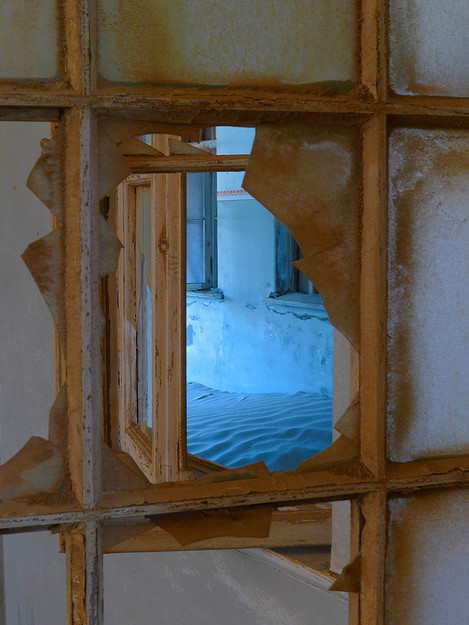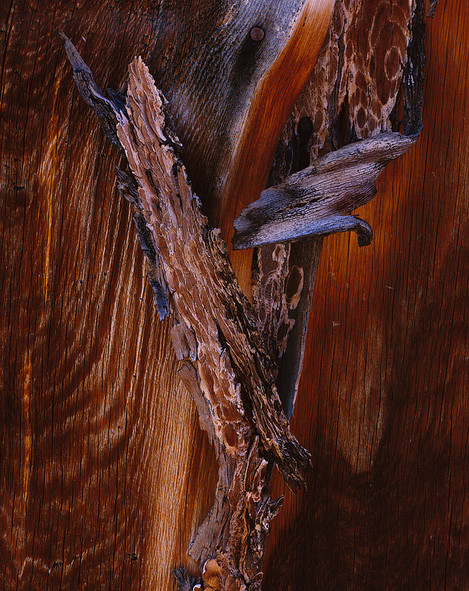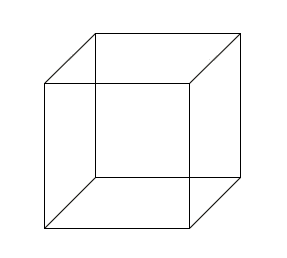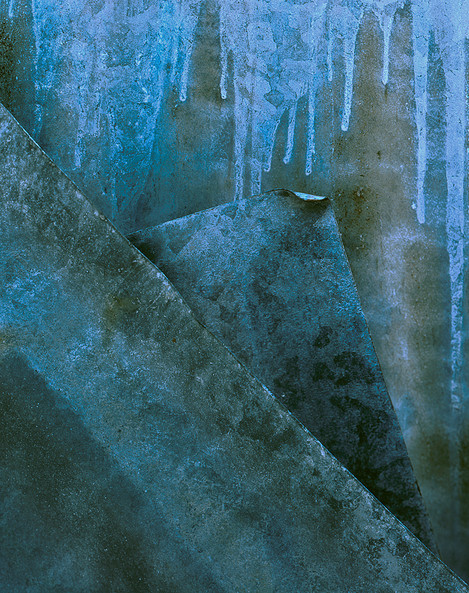David Ward examines our motives for making images

David Ward
T-shirt winning landscape photographer, one time carpenter, full-time workshop leader and occasional author who does all his own decorating.
“Why do we make photographs?” It seems such a simple question. But when I started to think about it I realised that actually, it’s quite a big question and one that few of us have a fully conscious understanding of. In this article, I will try to cover what seem to me to be the most obvious motives for capturing views of the world with a camera. Many of these are based upon personal insights gained from my thirty odd years as a photographer; some come from my interactions with workshop participants; and some from conversations with fellow full time photographers. A few of the motives that I will describe are necessarily specific to landscape work whilst others are, I feel, more universal. But I hope that as a whole they will give some understanding of an aspect of our craft that I think interests most of us. Hopefully, they will also provide a jumping off point for studying your own motives.
The reasons for making photographs are probably almost as numerous as photographers. But however disparate our objectives, there are - in my opinion - two dominant, conscious motives for photography.
Firstly, we make photographs to preserve a visual record of a period of time. This is the overarching reason for all photography. How can it be otherwise? It’s what photography does. It is also, not surprisingly, the principal motive for making photographs amongst the ‘non-photographer’ population – though in this digital age when almost everyone in the West carries a camera, perhaps we’re all photographers.
Secondly, we use photography as a way of expressing our love of a subject. This is the most prevalent reason for making photos amongst photography enthusiasts.
I’ll look at this in more detail after considering photography’s ability to fix a moment in time.
We live in a state of permanent temporal flux, perpetually balanced at the point where the future tips into the past. For millennia man has tried to hold on to some remnants of significant moments, tried to stop them descending into the dark and dusty canyons of the past from the sunlit - but ephemeral - upland of the present. Through the centuries we have done many different things to try and hold on to the past and to try to mitigate our sense of loss. On a cultural level, we commemorated events with ceremonies and rites, we erected memorials or we celebrated events through stories and myths. On a personal level, we had our portraits painted (if we were wealthy enough!), we wrote diaries or we kept mementoes - from commonplace holiday souvenirs to a locket of a loved one’s hair. But none of this was incontrovertible proof today of what had once been true. Photography changed this by holding on to myriad slender vestiges of moments and forever preventing their fall into the past. And, because our memories of the past make us who we are, in this way it provided a reassuring proof, both personal and cultural, of our identity.
Try for a moment to imagine a world without the family photo album and the memories it enshrines (it’s more likely stored on a computer today than bound in a book but it’s nonetheless a depository of memories): the twenty-first birthday party, the graduation ceremony, the holiday, the christening and countless other less significant moments are entrusted to the permanent vault of photographic representation for safekeeping. Our memories of events in our personal lives are now very often defined by accompanying photographs. Elliot Erwit once said, ‘weddings are orchestrated about the photographers taking the picture because if it hasn’t been photographed it doesn’t really exist.’ The mental image may fade but there is an air of irrefutability about the photograph that dominates our personal histories. If you can’t remember what great aunt Dorothy looked like, what colour hat she was wearing – just reach for the photo album. Memories of the faces of our social circle and events in which they participated are as much the memory of the photographic evidence as of reality. The time of our lives is made real by photography.
Fixing a point in time is also a prime motive for professionals (along with money!) but the difference is that they are preserving carefully crafted constructed moments. This is most apparent in the fields of advertising and fashion but it can be argued that it applies, perhaps to a lesser degree, to all professional photography. Since we inhabit the literal and metaphorical viewpoint of the photographer when we look at a photo, these constructed moments gain power because of their inherent link to reality. Of course, they might be heavily manipulated, both during the making of the image and afterwards, and in this sense, they might almost be thought of as false memories.
Fixing a period of time may be the overarching reason for picking up a camera in the wider population but I would argue that for enthusiasts it’s combined with an equally powerful one: love. I’m not talking about romantic attraction but rather a deep, abiding fascination. Most frequently this love is of a subject but sometimes it’s simply a love of the process of making photographs. In the case of the most committed photographers, the initial love of the subject becomes a love of photography as an aesthetic tool for gaining insights into our world – we can see this shift in the work of photographers such as Alfred Stieglitz, Edward Weston, Man Ray, Minor White, Henri Cartier Bresson, Jacques Henri Lartigue, Elliot Erwit and many others. As the photographers strive to make their images transcend their subject so subject becomes of secondary importance to the exploration of seeing.
For landscape photographers, walking across the land and a concomitant desire to capture some sense of how it feels to be in the landscape are often their initial inspiration for photography. I know from conversations with Joe that walking with a camera – or even just walking – is a very important part of the joy of photography for him. I wonder too if the physical effort helps to form a positive reinforcement between climbing hills and making photographs. It’s well known that when we exercise at moderate to strenuous levels for prolonged periods the body produces a range of chemicals which give us a sense of euphoria – sometimes called the ‘runner’s high’. The chemicals produced include endorphins, serotonin, dopamine and endocanabanoids (related to cannabis!). Together, in a way that’s not yet properly understood, this cocktail makes exercise a pleasurable pursuit rather than simply a fatiguing or painful one. Of course, we mustn’t forget the opposing view as stated by Edward Weston: “Anything more than 500 yards from the car just isn't photogenic.”
The love of subject can at times shade into obsessive behaviour. It is often jokingly suggested by fellow photographers that our craft is an addiction. Within any compulsive behaviour, there is always a spectrum of response. Whoever wrote, “If you saw a man drowning and you could either save him or photograph the event... would you shoot in colour or black and white?”, was clearly worse off than me but perhaps ideally suited to the life of a paparazzo.
I don’t mean to belittle sufferers of more serious and destructive addictions, but the compulsion to make photographs that takes over my life on a regular basis does seem like an addiction. We should be clear that we’re not talking about substance abuse but a form of addictive behaviour. (Opinions differ as to whether behaviours can truly be called addictive but for the sake of argument I will leave that definition in place.) Photography isn’t a destructive force in my life in the way that a true addiction would be. On the contrary, you could say that the craving I feel produces a positive creative outcome.
My photographer friends and I share some of the symptoms of addicts including compulsively performing deeds without the promise of material gain, getting a physical and mental high when the ‘drug’ is taken, feeling unhappy when we’re denied access to the ‘drug’, and a diminishing level of satisfaction with each ‘hit’ – we always want something bigger and better and our craving is never truly satisfied. (‘Bigger and better’ is hard to quantify when we cannot definitively say that one image is better than another. The unstable foundations of our craft can, therefore, make it hard to know for sure when we’ve had a good ‘hit’. And the longer we make images the quicker an individual image’s appeal is likely to diminish. And so we crave more… in an endless cycle.)
The behaviours that we don’t share with addicts are more significant. The level of compulsion is mild compared to true addiction. Photographers generally don’t, for instance, make images even when part of their brain is telling them that it’s a bad thing to do. Nor do they pursue their habit at the expense of their long-term health. Though photographic expeditions have caused me a deal of physical pain over the last three decades, I have only rarely endangered my life in an attempt to satisfy my yearning. I may be mad, but I’m not stupid. A life in photography hasn’t been an easy journey in other ways but it hasn’t cost me my job (perhaps that’s why I became a photographer!) or lost me my house. I’m certainly poorer than fellow graduates who chose other professions. And don’t get my wife and daughters started on my long absences and the pressure this can create at home. Yet, if I could live my life again I would not choose a different path.
I’m truly blessed that, although I’ve spent a small fortune on equipment, photography has provided me with a net income. This is a rare thing amongst landscape photographers who normally have to supplement their earnings with other jobs. But it’s worth re-emphasising that, whilst photography has earned me a living, money is definitely not the reason that I do it. Along with countless thousand others, I would continue to make images even if there were no possibility of a financial return. This suggests a deep compulsion based on emotional rewards. A chance conversation with a psychiatrist on a workshop revealed that the reason I’m not motivated by money might be because I’m affirmatively bonded to my art. Affiliative bonding is similar to the force that creates a profound emotional link between father and child.
Often the initial motive for photography may be slight. The reason given for picking up a camera might even be a pretext, a way of avoiding doing something else. In a phone conversation a few weeks ago, Tim suggested to me that some people might take up photography to look busy on holiday. They simply can’t leave the Protestant work ethic behind when they take time out from their occupations. Perhaps making photographs as opposed to lying on the beach makes them feel virtuous? "I'm not just lazing around, I'm making art!" Facetiousness aside, I can see that for some people photography is simply a way to while away the hours. For me, the thought of lying on a beach basting in sun cream and sweat is abhorrent, so much better to be making something. (I’ll return to the appeal of creating in point one below.)
In addition to the two principle conscious motives I mentioned above, I’m going to look at a further eight possible contributing factors or reasons for our mildly addictive behaviour. The list is not meant to be exhaustive; there are no doubt other reasons. Some of the ones I propose reflect a basic human urge – such as the need to create – some are intensely personal, others arise from our social nature and some are probably not consciously expressed by the photographer.
Here goes…
1. To satisfy the creative urge...
The drive to create seems to be an almost universal human trait though where it comes from is less clear. I've been told that Sigmund Freud thought creativity was the perfect expression of the id, our inner animalistic being. If this is true then creativity is driven by base biological impulses rather than being a highfalutin quest to make grand gestures of civilisation. What is clear to me is that most of the participants I meet on workshops and tours crave the opportunity to make something because they have limited outlets for creativity in their everyday lives. An interesting question to which I currently don’t have a complete answer is what is the reward for creativity? Why does making something make us feel happy? (I’ll return to this in point seven.) Freud thought that creativity was a sublimated sex drive. On the face of it this seems a plausible explanation. Making babies and making art could easily be seen as opposite sides of the same coin. If it’s true then there might be a plausible evolutionary explanation for our desire to create. But I’m not sure that the theory doesn’t say more about Freud and the age that he lived in than provide a true explanation for the urge.
2. Self expression…
The great American painter Edward Hopper wrote, “If I could say it in words there would be no reason to paint.” This is no doubt reason enough for many. Self-expression is an oft-used phrase but what does it mean?
Single photographs can have no consistent meaning because each viewer’s interpretation will be different – sometimes wildly so. Photographs are not like words with a range of widely accepted definitions. Therefore, the thought of being able to express how we feel or some more cogent narrative or idea in a single photo would seem doomed. We might, at best, be able to achieve some slightly out of focus image of our aims with a body of work. Appending a textual explanation would also help.
But I don’t think that most people are trying to express an idea. They just want to show their love of subject by making the most powerful image that they are able to. They want viewers to be entranced, to be fascinated or intrigued or in awe by what they re-present. As far as I’m concerned, there’s no doubt that great images spring from a deep love or understanding on the part of the photographer. There seems to be some alchemy at work since insights are gained yet no words pass between viewer and photographer. It’s apparent to me that when a photographer has a deep and abiding passion for his subject he is able to make images that reveal aspects and subtle nuances that would be invisible to others. It’s this insightful quality that makes the images great.
3. A chance to escape…
Many hobbies or pastimes spring from a desire to move beyond the bounds and bonds of our workaday lives. Photography can satisfy this with both practical and spiritual means of escape from everyday existence. In the case of outdoor photography, the practical escape comes in the form of a continual incentive for a literal change of scene. The majority of the working population now spends their lives indoors. Landscape photography gives people a reason to be outside, a reason to enjoy the natural environment.
The spiritual escape depends upon a certain amount of effort from the photographer but the rewards are great. If we are to master any kind of art, including photography, we need to think in a different way. In our everyday lives many of the tasks that we’re faced with call for convergent thinking, where there is only one correct answer to the problem in hand. A representative example of this type of thinking is an arithmetic equation: 2+2=4. But in the arts the problems we face are divergent. In other words, every puzzle has numerous possible and equally valid solutions. (That’s not to say that some solutions aren’t better than others!) Trying to solve this kind of problem calls much more for subconscious rather than conscious mental processing. This means that one is apt to fall into an almost meditative state where neither the physical discomfort of standing in the pouring rain nor the passage of time is of any significance This meditation is, from my own experience, both pleasurable and psychologically invigorating. I also can’t think of a more profound way to escape the mental restrictions of everyday life. (See point 7 for more on the attraction of solving puzzles.)
4. To hunt, to gather…
The phrase “take a photograph” has more depth than first impressions would suggest. I have written elsewhere that I think one of my motives for photography might be to capture beauty; one might say that I'm seeking to take an image of that elusive quality back to my lair so that I may feast my eyes upon it at leisure. But I think that there’s also a baser motive that might be typified as being a collector. When one looks at some online galleries, there’s a sense that the photographer is ticking places off a list, like the photographic equivalent of Munro bagging. This might be seen as akin to stamp collecting or train spotting, something now recognized as a mild personality disorder called Obsessive Compulsive Personality Disorder (OCPD). This is distinguished from the more serious Obsessive Compulsive Disorder (OCD) by the fact that the effects of the latter (e.g. compulsive counting, washing hands until they bleed, extreme orderliness) are recognised by the sufferer as disruptive whereas the effects of the former (e.g. habitual practices, attention to detail, encyclopaedic knowledge) are seen as a boon. I feel that artists of all kinds benefit from a little bit of OCPD, but it’s a question of degree. The Wikipedia entry puts it succinctly: “habits tend to bring efficiency to one's life, while compulsions tend to disrupt it.”
A subtle variation on this collecting approach is the taking of trophies. The intention of these photographers is not to provide new insights but to gain bragging rights. Typically landscape photographs in this category were made after the photographer endured extreme conditions or are of well-known locations in spectacular light. Of course, both spectacular light and extreme conditions might be seen as worthy reasons for making an image but the accompanying text or discussion in the forums is on how hard the photo was to make rather than it’s aesthetic or artistic merits. A good photograph should do much more than proclaim how clever or brave the photographer was.
5. To belong…
Humans are social animals, we evolved and feel most comfortable as members of familial groups. But now we have the choice to join tribes who share our common interest and although photographers are often loners most still want to belong – they also, not incidentally, crave the approval of their peers. Joining a photographic society, club or online forum are all ways of making stimulating and satisfying social interactions with like-minded individuals. The huge success of web galleries like Flickr and ePhotozine are proof positive of our desire to belong to a group of like minded people.
6. A voyage of discovery…
It has become fashionable in recent years to describe various human activities as revelatory journeys though few seem to warrant this grand description. However, I think that this metaphor is quite opposite when applied to photography – perhaps even more so when applied to landscape photography! When Richard Child’s cited the urge to discover as the driving force in his photography (in his piece on “Why…” in Issue 27) it resonated with my own ideas about photography. For me, photography is a voyage of exploration. But unlike the famed explorers of the past, I don’t usually set out with the expectation of reaching a particular destination. When I set out to make images I do so purely in a spirit of enquiry, and this is the point of difference with the hunter-gatherers that I mentioned above. I don’t feel the need to achieve a specific target, to tick a box and say that I have taken an image of a particular place. I am striving to broaden the limits of what I understand and that doesn’t mean that I will always make a photograph. Robert Louis Stevenson wrote that, ‘To travel hopefully is a better thing than to arrive’ and for me the voyage of discovery alone is sometimes enough.
7. Puzzle solving…
Making a photographic composition can be compared to solving a four-dimensional puzzle – with the added twist that (as I noted in point three) there is no single correct answer. In fact, if you stand a group of six photographers in one spot for an hour or two they will probably make dozens if not hundreds of differing compositions. Because there will always be some uncertainty as to how valid your ‘answers’ are, the satisfaction you achieve from making a composition isn’t quite the same as correctly answering all the clues in the Times cryptic crossword. There is still enormous satisfaction, however, to be gained from making the effort.
In Landscape Beyond I wrote about how a part of the brain called the limbic system forms the bridge between emotions and objective thought. It is the limbic system that provides us with the capability of reasoning so that we may solve problems and also provides us with the feeling that good solutions are beautiful. This makes perfect sense in evolutionary terms. Finding something that works beautifully is a rewarding experience and one that is likely to lead to positive outcomes for the individual. This also explains why the mathematician Henri Poincaré wrote, ’the longing for the beautiful leads to the same choice as the longing for the useful’. And it is why Subramanyan Chandrasekhar, a winner of the Nobel Prize for Physics, wrote, ‘What is intelligible is also beautiful’.
As photographers, we can increase our pleasure by finding more novel solutions to the problem of composition. Since the compositional puzzle is a divergent problem there is always the possibility of finding an answer that stands out amongst the mass of images made by our fellow photographers. The longer we practice as photographers (and sometimes the longer we delay pressing the shutter) the higher the chances are that we will find such an unusual solution. Experience, through a thorough understanding of technique and a practised eye, allows us to combine the elements of the puzzle in new and interesting ways – yet another reason to abandon ‘rules’ which will only lead to mundane answers.
8. The pleasure of seeing…
One of my most enduring pleasures comes from the beauty that I find in the world around me, whether it be new or familiar. Photography has opened my eyes to this treasury by teaching me how to truly see. I suspect that this joy is one shared by most artists and hence a widespread motive. We take seeing for granted, it appears to be a transparent, simple process but is actually a very complex one.
As an indication of how we take seeing for granted, no one understood why we have two eyes until the scientist Charles Wheatstone discovered human stereoscopic vision in 1838. It had always been assumed that we had two eyes merely for reasons of bilateral symmetry. The mind does such a good job of combining the separate images from each eye that, apart from Leonardo da Vinci, no one had noted before Wheatstone that each eye had a slightly different viewpoint. Even the genius Leonardo had not realised that binocular vision afforded us the ability to determine the relative depth of objects in our field of view.
Vision only starts with our eyes, our brains do the majority of the work. However, we have evolved to take shortcuts in this ‘processor’ intensive procedure. We habitually use assumptions, patterns and routines to enable us to see more quickly. There’s an evolutionary advantage in understanding just enough of our visual environment so that we don’t get ourselves into trouble. So most of the time we glance rather than see. If we spent too long looking we might get into other kinds of trouble, like not gathering enough food. The mental processing is subject to misleading assumptions – this is why we have optical illusions. These illusions, such as the Necker Cube shown below, can reveal where the assumptions take over.
Visual artists have to turn their full attention to the world. I’ve heard it said that drawing is 99% observation and only 1% doing and I think that the same applies to making photographs. In order to make good photographs we must learn to see things for what they are and not what we imagine them to be. We must also learn to truly see proportion, line, colour and tone. I find this a deeply engrossing and satisfying process so exploring how I see and how a photograph can change how something looks has become perhaps my overriding reason for making images.
When Tim first proposed that I write this article I was instantly reminded of the fine collection of essays on this topic by Robert Adams. His exploration covered themes both grand and subtle – from the common desire to make art to the less apparent desire to tell truths about life through photographs. In nineteen essays, he looked at other photographers whose work inspired and informed his own and he also examined how working practice had changed in the last century and a bit. The book touched on the profane, the mundane and the personal – exploring sex, money and a love of dogs as reasons to make images. I would recommend it to all of you. I haven’t even attempted to emulate the range of his fascinating work in a mere four thousand words but I hope that this list has stimulated some questions and would love to read about your reasons in the comments.

